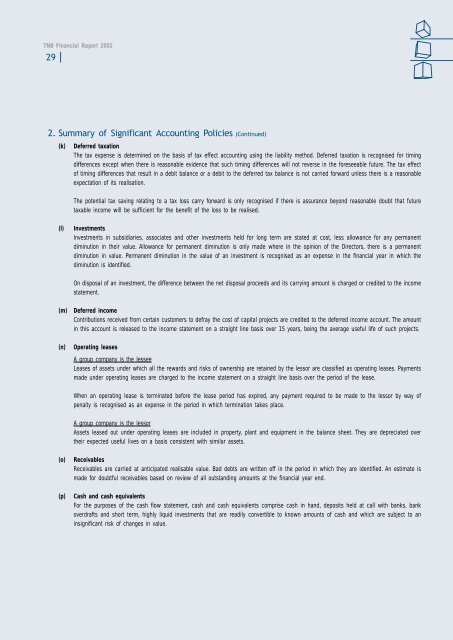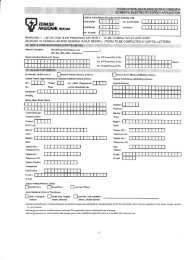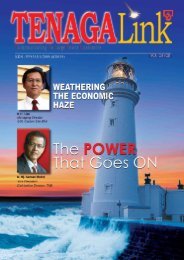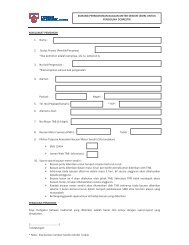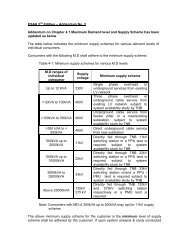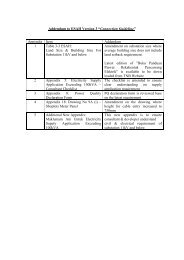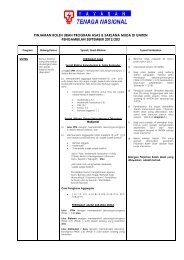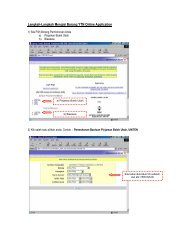Download - Tenaga Nasional Berhad
Download - Tenaga Nasional Berhad
Download - Tenaga Nasional Berhad
You also want an ePaper? Increase the reach of your titles
YUMPU automatically turns print PDFs into web optimized ePapers that Google loves.
TNB Financial Report 2002<br />
29<br />
2. Summary of Significant Accounting Policies (Continued)<br />
(k)<br />
Deferred taxation<br />
The tax expense is determined on the basis of tax effect accounting using the liability method. Deferred taxation is recognised for timing<br />
differences except when there is reasonable evidence that such timing differences will not reverse in the foreseeable future. The tax effect<br />
of timing differences that result in a debit balance or a debit to the deferred tax balance is not carried forward unless there is a reasonable<br />
expectation of its realisation.<br />
The potential tax saving relating to a tax loss carry forward is only recognised if there is assurance beyond reasonable doubt that future<br />
taxable income will be sufficient for the benefit of the loss to be realised.<br />
(l)<br />
Investments<br />
Investments in subsidiaries, associates and other investments held for long term are stated at cost, less allowance for any permanent<br />
diminution in their value. Allowance for permanent diminution is only made where in the opinion of the Directors, there is a permanent<br />
diminution in value. Permanent diminution in the value of an investment is recognised as an expense in the financial year in which the<br />
diminution is identified.<br />
On disposal of an investment, the difference between the net disposal proceeds and its carrying amount is charged or credited to the income<br />
statement.<br />
(m)<br />
Deferred income<br />
Contributions received from certain customers to defray the cost of capital projects are credited to the deferred income account. The amount<br />
in this account is released to the income statement on a straight line basis over 15 years, being the average useful life of such projects.<br />
(n)<br />
Operating leases<br />
A group company is the lessee<br />
Leases of assets under which all the rewards and risks of ownership are retained by the lessor are classified as operating leases. Payments<br />
made under operating leases are charged to the income statement on a straight line basis over the period of the lease.<br />
When an operating lease is terminated before the lease period has expired, any payment required to be made to the lessor by way of<br />
penalty is recognised as an expense in the period in which termination takes place.<br />
A group company is the lessor<br />
Assets leased out under operating leases are included in property, plant and equipment in the balance sheet. They are depreciated over<br />
their expected useful lives on a basis consistent with similar assets.<br />
(o)<br />
Receivables<br />
Receivables are carried at anticipated realisable value. Bad debts are written off in the period in which they are identified. An estimate is<br />
made for doubtful receivables based on review of all outstanding amounts at the financial year end.<br />
(p)<br />
Cash and cash equivalents<br />
For the purposes of the cash flow statement, cash and cash equivalents comprise cash in hand, deposits held at call with banks, bank<br />
overdrafts and short term, highly liquid investments that are readily convertible to known amounts of cash and which are subject to an<br />
insignificant risk of changes in value.


